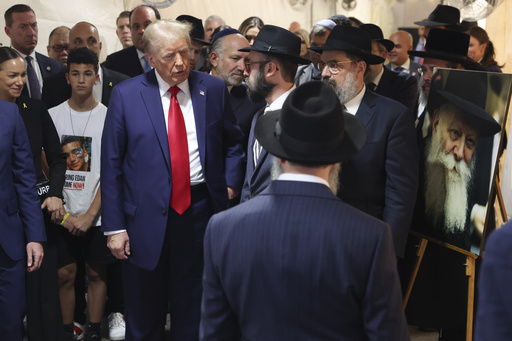
In an innovative strategy during the election campaign, Donald Trump sought to connect with various smaller religious communities, recognizing the significance of each vote, especially in crucial swing states. His approach, known for its robust engagement of white evangelical voters, extended to groups often overlooked in mainstream political discourse. Despite winning by significant margins, Trump’s deliberate outreach to diverse faith groups highlighted the campaign’s understanding of microtargeting voters in a complex electoral landscape.
Just days before the election, Trump addressed the Coptic Christians in the United States via a post on social media, commending their “Steadfast Faith in God, Perseverance through Centuries of Persecution, and Love for this Great Country.” This engagement marked a historic moment for the Coptic community, as noted by Mariam Wahba, a Coptic Christian and research analyst. She emphasized the “profound” nature of seeing a major presidential contender recognize their community in such a personal way. Many Copts resonate with conservative values, aligning them with other Republican voters, and the announcement served to strengthen their loyalty to Trump. Following his victory, Coptic bishops reached out, celebrating shared family values and expressing their support.
Similarly, Assyrian Christians, another group with Middle Eastern heritage, found common ground with Trump, especially after an incident where his mispronunciation of “Assyrian” drew widespread attention. Sam Darmo, a Phoenix real estate agent and co-founder of Assyrians for Trump, mentioned that key community concerns revolved around the economy, illegal immigration, and other pressing issues. These views mirrored those commonly held among conservative Christian groups, particularly regarding topics like abortion and religious freedom. Darmo also highlighted the role of Massad Boulos, who helped mobilize several Middle Eastern Christian communities for Trump, illustrating Trump’s capability to unite various minority factions under his campaign.
However, not all Middle Eastern Christians share a uniform political perspective. Marcus Zacharia, the founder of Progressive Copts, pointed out that many younger individuals within these communities are critical of Trump’s policies, particularly regarding immigration. There is a concern that their plight is often highlighted in a simplistic manner, which neglects broader systemic issues they’re facing. Zacharia emphasized the importance of open dialogue across political divides, suggesting that the next four years are a crucial opportunity for candid conversations within these communities.
In addition to engaging smaller religious groups, Republicans targeted the Amish population, particularly in Pennsylvania, where their numbers are approximately 92,000. Despite historical patterns indicating low voter turnout from this community, the GOP employed strategies such as billboards and mail campaigns to encourage participation. Trump received support from members of the Amish community like Samuel and Lillian Stoltzfus, who cited anti-abortion beliefs as a key factor in their decision to vote for him.
Steven Nolt, a history professor specializing in Amish studies, explained that while it remains early to assess voter behavior definitively, there is currently no substantial evidence to suggest an increased turnout among Amish voters. He noted that while Lancaster County leans Republican, with Trump achieving notable wins, areas with significant Amish populations showed varied increases in support, remaining largely consistent compared to prior elections.
Trump also took steps to engage with the Chabad Lubavitch movement, a notable faction of Orthodox Judaism. On the anniversary of the Hamas attack, Trump visited the Ohel, the burial site of Rabbi Menachem M. Schneerson, where he paid his respects by laying a stone and reciting a prayer. This act resonated deeply within the Chabad community, illustrating Trump’s efforts to connect with Orthodox Jews by addressing issues related to Israel and other policies.
Overall, Trump’s outreach efforts exemplified a multifaceted campaign focused on diverse religious groups. While these various factions may not share an identical political narrative, the strategy of acknowledging their unique values and concerns has been a distinct feature of his campaign approach, aimed at garnering broader support among critical swathes of the electorate.
